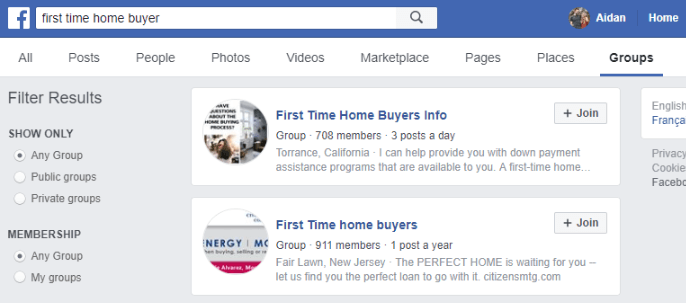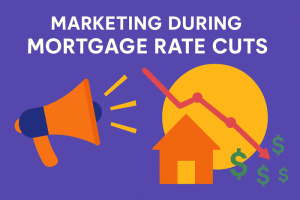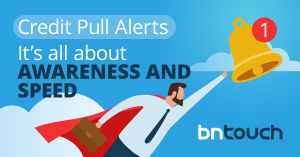Summary
This article emphasizes the value of content marketing in attracting and nurturing leads. It highlights strategies like blog posts, videos, and infographics that educate clients and build trust. By creating quality content, mortgage offices can position themselves as industry experts and foster long-term relationships.
Content marketing is a strategic marketing approach focused on creating and distributing valuable, relevant, and consistent content to attract and retain a clearly-defined audience — and, ultimately, to drive them to do business with you.
Instead of pitching loan programs, you are providing truly relevant and useful content to your prospects and customers to help them solve their problems. Content marketing brings in three times more leads than traditional marketing and costs 62% less. So it’s easy to see how a solid and consistent content marketing strategy can benefit your brokerage or mortgage office.
Great Content Marketing Examples
Before we dive into how you can plan and implement a killer content marketing schedule, let’s take a look at 2 companies that are not only doing content marketing but excelling at it.
Grammarly
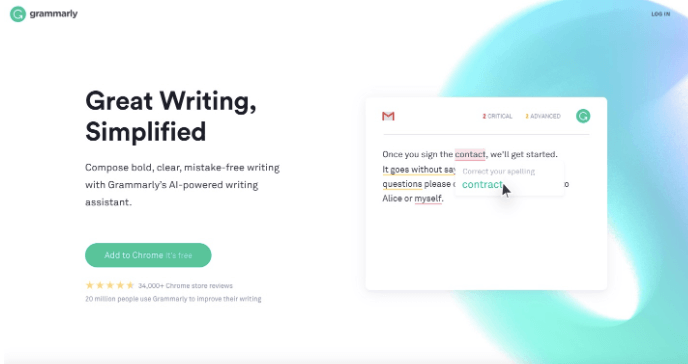
Grammarly is a browser-based tool that helps writers check spelling and grammar. It also provides explanations of errors, suggestions to fix those errors and even synonyms that may be used in place of words or phrases in the content they write.
Even though a blog about grammar and spelling mistakes sounds like it wouldn’t be that interesting to read, they’ve actually figured out a way to make their content fun for their audience. For instance, rather than just an article about how to write better stories, they chose the theme of food for an article titled, “Telling Tasty Stories: How Three Food Writers Found Their Niche”.
They didn’t stop at just a blog with interesting articles either. They send weekly emails to their subscribers, in a gamification type layout that rates their word usage and compares them to other subscribers on their platform. This focus on customer retention has made their content marketing efforts wildly successful.
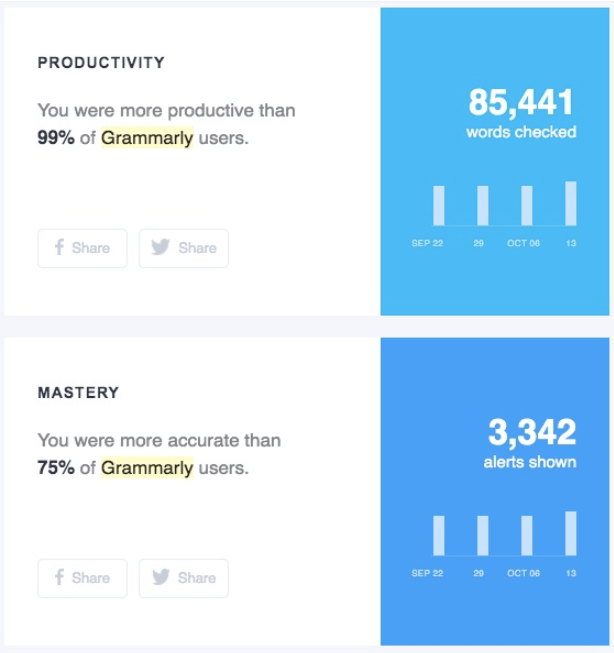
The public at large may feel the same way about home mortgages as they do grammar. They both fall into the category of something that is a necessary part of life, but not very exciting topics. Following Grammarly’s example though and making your content spin towards the fun end is a great way to keep your potential clients engaged and interested.
For instance, rather than writing an article about the different types of loan programs you offer, why not write an article about the 3 most unusual loan requests your brokerage funded. In that article, you can still describe three different loan programs your brokerage offers. You’re just doing it in a more interesting way that will pull your potential clients in and get them engaged.
Evernote
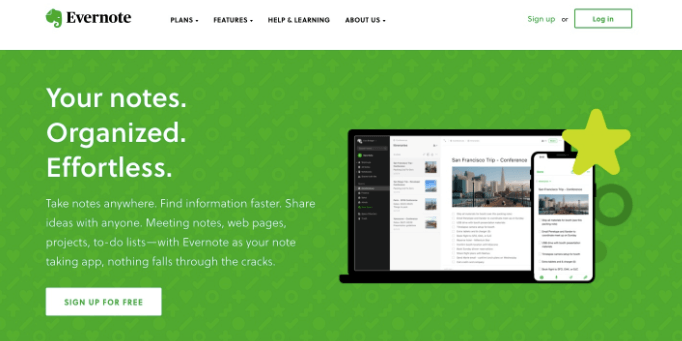
Evernote allows users to take notes anywhere, find information faster and share ideas with anyone. Meeting notes, web pages, projects, to-do lists. It does it all, and their mission is to ensure that nothing falls through the cracks.
One of the most amazing strategies that Evernote has mastered is the art of telling their prospects and customers what their platform does, without making it sound like sales material camouflaged as marketing. They’ve done this by writing great customer-focused stories.
Their stories showcase how individuals and businesses in various industries are using the platform in innovative ways. Rather than focus on the Evernote project, they place emphasis on the industry each company is in and the number of employees they have, etc. This helps their audience relate and get a good sense of what the Evernote platform can do for their business.
As Evernote has proven, people love a good story. People especially love a good story they can relate to. Using past client success stories, you could actually employ the same type of customer-focused marketing strategy that will demonstrate how you go above and beyond for your clients and truly are a thought leader in your industry.
Start With Client Personas
Client personas are semi-fictional stories about your ideal clients. Creating content is like acting, you need to think like your clients in order to provide them with the information they’re looking for and will find valuable. Who is your audience? What are their motivations, goals and pain points?
How To Build A Client Persona
As you build your client personas, you want to take into account the following factors:
Demographic Identifiers
Have you noticed that the borrowers you work with share certain characteristics? Review past closed loans to find out what types of loans you have been closing and what types of people you have been working with to identify common traits and produce demographic insight for a target audience. Try pinpointing the following type of information:
- Sex
- Age
- Annual salary
- Employment
- Experience
This information is important because it gives you insight into the type of content that will be deemed most valuable by your target group. For instance, if you find out you tend to work with more mature, property investors, creating a bunch of content with “how-to” guides that revolve around first-time home buyers would certainly not get you the results you want.
Goals & Pain-points
Continuing on that thought, you never want to create content for your audience that solves a problem that your target audience is not interested in. Focus on your ideal customer’s goals and pain-points and create content that specifically addresses those points, this will drive engagement and convert more leads into clients. For example, if you find your client base is lower-middle class with mediocre credit scores you could create content on “how to get loans with lower down payments” or “tips to improving credit quickly”.
Not only that but when a potential customer feels like you really understand what they are going through, they are much more likely to reach out to you and seek your help.
*Pro-tip: You can automate this process by having your CRM send out surveys to your borrower after their loan has closed. BNTouch for example allows you to create and add surveys to your post-funded loan email drip campaigns.
Potential Objections
Taking a look and thinking back to any patterns in objections you’ve had to handle when converting prior leads into clients is also very important. Identify common objections or questions you get often and turn them into content. You can now send this content to a new lead in a drip campaign and ease their hesitation automatically.
Content Ideas You Can Use
Here are a few content marketing ideas your mortgage business can start using today:
Write Content About Current Industry News
The main reason you want to create valuable, informative content is to establish yourself as a thought leader in your industry. One part of becoming a mortgage thought leader is keeping up with current news and trends.
Sharing helpful news articles and giving your feedback and analysis on them is a great way to establish thought leadership.
Update & Re-Use Content
You don’t always have to be coming up with new stuff. Let’s say two years ago you created a “What NOT TO DO when applying for a home loan” guide. Go through that content and update it with any new information you may have acquired in the past two years. Repost the content as “Updated For 2020, What Not…” or “…When Applying For A Loan In 2020”.
People want content that is relevant and new as things change so quickly. A great place to start with content is revamping or updating what’s been successful for you in the past.
Focus On Your Personas
Not to sound like a broken record, remember to focus on your ideal clients. Put yourself in their shoes. What types of information are they searching for on Google? Create content that addresses it. What would they stop scrolling to click on social media, create that!
Helpful content on your website and social media channels will attract potential leads and establish your brand as the thought leader in the mortgage industry. Using the above tips to generate your content will help you reach these goals.
Create A Content Calendar
Your content expounds over time. Consistency is more important than quality and quantity here. Chose a content time frame that you can keep up over the long term, it’s better to post one piece of content a month for two years than one piece of content a week for six months. So figure out how often you can post consistently and setup a content calendar to organize it.
Make Your Content Calendar Shareable
While you may not want everyone on your team to be able to edit your content calendar, everyone should at least have access to it and be able to review what is on the horizon. Remember, content is a team effort. Sharing your calendar will make your campaign that much better.
Make Sure You Are Always Updating Your Calendar
Your content calendar is a living, breathing thing. As you get feedback on prior pieces of content, and as your team suggests more potential topics, you need to regularly update and tweak your calendar.
Batch & Schedule Your Content
Most blog content platforms like WordPress will allow you to schedule your content in advance. This will allow you to create four pieces of content at once and if you’re posting once a week, schedule them out so they drop each week for the next month. This means you can focus on large chunks of your content at once and not have to think about it again for weeks or even months.
Create A Content Backlog
There are always going to be some ideas that you can’t get started right away. This is okay. That doesn’t mean that you will never be able to get to them. By creating a content backlog document, you can keep track of these ideas and eventually get back to them when time permits. This is a valuable tool to ensure that you never run out of content. If ideas seem to be running dry, visit your backlog and see what might be worth getting to work on.
How To Distribute Your Content
Once you’ve developed all your great mortgage content you, of course, have to promote it so people come across it, engage with it and enter your pipeline.
Post Natively On Social Media
Everyone knows to post their content to social media but did you know Facebook, LinkedIn, Instagram and all other social platforms will actually show your posts to less people if they link to other platforms. Every social platform actually prioritizes what is called “native content” that is uploaded specifically to their platform.
So if you want to share a video on Facebook, don’t just post a Youtube link. The algorithm will show your video to more people if you actually upload it to Facebook also.
On LinkedIn rather than sharing a link to that blog article, click the “Write An Article” link and actually create a blog post inside LinkedIn with the content you put on your blog.

The great advantage to doing this is the organic reach the post will have. The algorithm will prioritize content that doesn’t make people click off somewhere else. Your post will be visible to people outside of those you are already connected with and your content will be available in that platforms search bar when people look for related info.
Get Involved On Facebook Groups
These are free audiences for you to engage with online. You can join a local homeowner, rental, home-sale or any other type of group related to your market by searching on Facebook and selecting the groups filter.
You can target neighborhood community pages in your marketplace and start interacting with people on those pages. People on those pages live in neighborhoods in the marketplaces you serve and they are bound to ask questions that you can answer.
If you planned your persona planning and content calendar correctly, some of those questions they have will be easily answered by you simply reaching out to them and sharing a link to your content.
This is a fantastic way to not only share your content but also engage with people in your marketplace and establish yourself as the mortgage thought leader in the area.
Run Facebook Ads
The greatest thing about Facebook Ads is the wealth of information they have on their user base. Using the audience tool in Facebook manager, you can create an audience that speaks exactly to your ideal clients. This makes their ad platform a very powerful weapon in your arsenal.
Targeting your ideal clients, run ads that promote your content. Since you are targeting your ideal customers, and you’ve written content that they will find pertinent, useful and valuable, they’re very likely to click on the link to get to your content and then engage with it.
This is a great way to target potential home-buyers who may still be in the informational stages of the process. Just make sure your content has an email opt-in or contact section so someone can reach out to you if they have questions.
Run Remarketing Campaigns
The truth is that very few if any visitors convert on the very first visit. This is why retargeting is so important. Retargeting campaigns are campaigns that allow you to “remarket” to those people that have either visited your mortgage company’s website or engaged with your content in the past but haven’t converted yet.
When setting up these campaigns, you should consider running campaigns on Facebook/Instagram, LinkedIn and also on a 3rd party aggregator service such as Adroll.
Retargeting campaigns can bring back up to 98% of the visitors that don’t convert right away. This is powerful because it keeps your brand strong in their minds. It also allows you to serve them more content that you have created, helping you further establish yourself as a mortgage thought leader in their minds.
Set Up Strategic Email Marketing Campaigns
One of the single most important assets you have is your email list. Send weekly, bi-monthly or monthly email blasts to directly promote your content to your audience. This is an incredibly effective way to promote your content because there is no middle man, you’re sending your stuff directly to your audience.
If you can we recommend that you segment your email list into categories based around your client personas. You can have a Veterans list, first time home buyer, refinance, etc. This way when you have a piece of content that address their specific issues you can send it to the list it’ll be most influential for.
If you’re sending generic emails to your whole email list you may not be connecting with anyone’s specific goals or needs once someone sees your content isn’t valuable they’ll unsubscribe or stop reading your emails and that potential business is lost. So keep your emails lists as segmented and specific as you can. You can always send a piece of content to multiple lists.
Takeaways
While it’s true that there is quite a bit of planning that goes into executing a successful content marketing campaign for your mortgage business, the truth is that you have to do it if you want to continue to be relevant and sought out by potential clients in your marketplace.
As a quick recap, here are the specific key steps you need to follow to run a successful content marketing campaign for your mortgage business:
- Start With Client Personas
- Focus on client demographics
- Focus on the client’s goals and pain points
- Focus on potential client objections
- Create A Content Calendar
- Make sure your calendar is sharable with your team
- Visit and update your calendar frequently
- Batch and schedule all your content
- Create a content backlog
- Distribute Your Content
- Post natively on social media
- Get involved in Facebook Groups
- Run Facebook ads
- Run ad retargeting campaigns
- Set up strategic email marketing campaigns
Key Takeaways
- Create informative content to engage your audience.
Blog posts, videos, and case studies offer valuable insights that attract and engage potential clients.
- Boost SEO with quality content.
Well-crafted content improves your search engine rankings, driving more organic traffic to your website.
- Use content to build trust and authority.
Offering educational content establishes you as an expert in the mortgage industry and builds credibility with clients.
Commonly Asked Questions
- Why is content marketing important for mortgage offices?
Content marketing is crucial for mortgage offices as it helps build trust with potential clients, improve SEO, and establish authority in the industry. By offering valuable insights, guides, and educational content, mortgage offices can attract clients looking for reliable and knowledgeable professionals.
- How does content marketing help mortgage professionals engage with clients?
Content marketing provides opportunities to engage with clients by offering useful information that answers their questions and addresses their concerns. Mortgage professionals can use blogs, videos, and infographics to guide potential clients through the mortgage process, fostering relationships along the way.
- What types of content should mortgage offices create?
Mortgage offices should focus on creating content that educates clients about the mortgage process, provides home-buying tips, and offers insights into market trends. Blog posts, webinars, client success stories, and downloadable guides are effective formats to keep audiences informed and engaged.
- How can mortgage offices measure the success of their content marketing efforts?
Mortgage offices can measure success through website traffic, engagement metrics (such as social shares and comments), and lead conversion rates. By tracking these metrics, they can assess which types of content resonate most with their audience and adjust their strategy accordingly.

